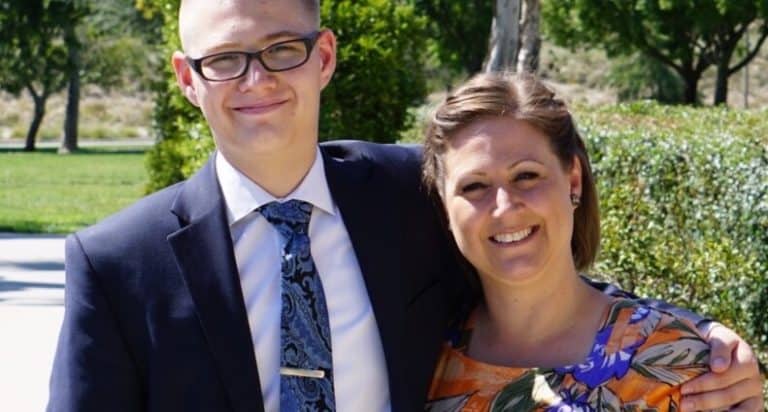It’s a fear we have as parents long before our kids enter their teen years: What if our kid makes a terrible, compulsive decision that permanently alters the course of their lives? We have our own memories of engaging in risky behavior. We may have watched helplessly as friends slid down rabbit holes of drug use and dropped out of school or were convicted of criminal activity or even harmed themselves somehow because of one poorly considered act.
I was a wild child myself, and I often marvel at how I managed to make it out of my teens and early twenties relatively unscathed. I have always told myself I was lucky.
Because, like many teens, I was compulsive. I sought risk and sensation and a feeling of mental and physical freedom. I wanted to try everything. I knew there was a boundary somewhere, a line I shouldn’t cross, but I couldn’t see it. I wanted find it, and I wanted to get as close to it as possible. I seemed to lack behavioral brakes.

Teens lack impulse control
A study published in the Journal of Youth and Adolescence explored this topic. Researchers studied six waves of data gathered from 387 adolescents, ages 11 to 18. The goal was to better understand the relationship between sensation-seeking and impulsivity of the teen years and cognitive control and later substance use disorders.
Adolescents are assumed to lack behavioral brakes—their prefrontal cortex is still developing, and this inhibits their ability to control their impulses, especially in the heat of the moment. We fear that this sensation-seeking during adolescence may put our teens at risk for future problems like an ongoing lack of cognitive control or substance abuse.
In this study, funded by the National Institutes of Health, researchers teased apart an important distinction between cognitive control and sensation-seeking. The terms are often used almost interchangeably, but they’re not the same thing.
Lack of cognitive control (impulsivity) in early adolescence did correlate with a higher risk for future substance abuse. But sensation-seeking on its own? That’s a normal part of growing up, and, according to this study, not associated with later problems with impulsivity or substance abuse.
In other words: sensation-seeking is normal and healthy and necessary behavior for teens. Impulsivity isn’t universal, but if we detect it in our kids, it’s something we need to manage.
Grown and Flown spoke with Dr. Ken Ginsburg, Co-Founder of the Center for Parent and Teen Communication,to learn what parents can do to support their teens when it comes to impulsive behavior. “It is a gross misinterpretation to believe that being a teen automatically puts you into risky territory,” Dr. Ginsburg tells us.
Teens’ brains are changing rapidly, absorbing massive amounts of new information while getting rid of what they no longer need. But adolescents are absolutely capable of making thoughtful, calculated choices and evaluating risk. And parents’ input matters.
“We must talk to our teens in a way that ensures they access their rational, calm way of thinking,” Ginsburg says. “This involves respectful listening and avoiding over statements. It includes encouraging teens to avoid making decisions in the heat of the moment. And it means avoiding lectures, which are often given in a tone and manner that push young people towards the very behaviors we fear.”
Ginsburg suggests we save our most important conversations for calm, non-threatening moments. So, the same way we aim to communicate with adults in our lives, the difference being that for teens, it’s even more critical because of how quickly their brains are changing.
But teens do need to be allowed and even encouraged to experience sensation-seeking and risk-taking. Teens are preparing for independence, and that means it’s important we give them chances to “experience new opportunities, take risks, and even fail,” says Ginsburg. “They need real-world practice so they can learn to recover from mistakes and bounce back.”
Healthy growth opportunities include organized sports, afterschool clubs, or other extracurricular activities that allow teens to challenge themselves and push their boundaries in a safe way.
“One of the most challenging aspects of parenting is determining when to protect teens and when to get out of the way,” says Dr. Ginsburg. When safety is at stake, parents should draw clear boundaries with firm, reasonable consequences.
And Ginsburg advises parents to remember that many risk-taking behaviors, like drugs, are often a teen’s way of attempting to manage stress. Parents should teach their kids what not to do, but just as important, teach their kids what to do.
Offer strategies for getting out of sticky situations, make sure your teen knows you will support and listen without judgment, and provide healthy ways to cope and manage stress.
So, I was a wild child. Why didn’t my risky behavior as a teen lead me down a dark path of no return? Why did I never cross that boundary I was so anxious to flirt with? A few times I got close, but I always stepped back. Was I really just “lucky”?
Luck probably had a little something to do with it, but looking back, and after talking to Dr. Ginsburg, I can see that I did have my own set of personal brakes. My mother was (and continues to be) a calm, honest, compassionate, and non-judgmental presence in my life. Yes, I had a wild streak, but my mother’s wisdom was always in the back of my mind as a gentle warning, always pulling me back from the edge and pushing me to strive to be better.
We don’t need to assume that teens have no impulse control. Their minds may be changing fast, but that doesn’t mean they’re wired for dangerous behavior. With encouragement to take healthy risks and reasonable consequences for when boundaries are crossed, our teens can thrive on their path toward independence.
Related:
Your Teens Need To Know That Failure Really Equals Success and Here’s Why









